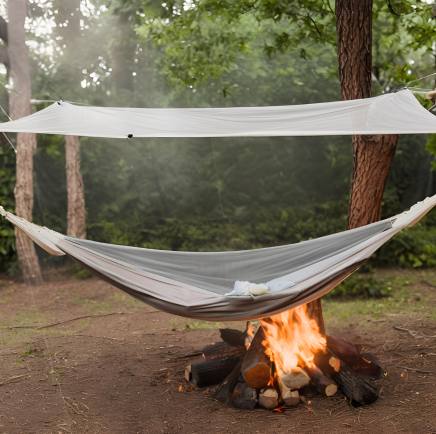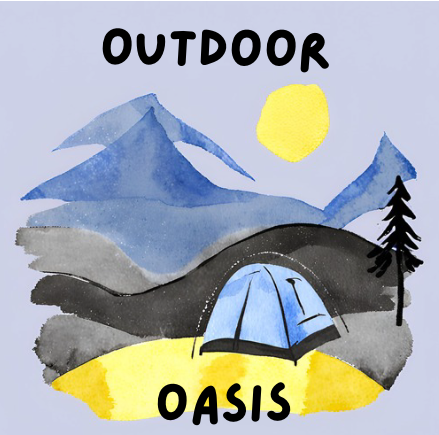
If you want to give your sleep quality a boost, it might be time to consider the unrivaled comfort of a hammock. Now, I’m going to walk you through the often-overlooked benefits of swapping your traditional bed for the gentle embrace of a hammock. It’s not just about the soft swaying; it’s also about how this can improve your blood flow and circulation.
In my opinion, the key to a restful night’s sleep lies in how well we treat our bodies. Traditional mattresses, while common, tend to focus pressure on specific joints, which can impede circulation during the night. Hammocks, on the other hand, cradle your body, evenly distributing weight and relieving those pressure points. That means a boost in blood flow and a more comfortable sleep.
But that’s not all. Hammocks engage our vestibular system – that’s the part of our inner ear that helps control balance. The gentle rocking motion common to hammocks taps into this system, promoting a state of relaxation that prepares your body for deeper sleep. It’s similar to the soothing effect you experience in a rocking chair but imagine you can stretch out and snooze.
This isn’t just anecdotal; many users report a notable improvement in sleep quality when they make the switch to a hammock. You’re going to find out about more than just the science; you’ll discover the practical benefits that could make your nights more restful.
Now, as we migrate towards the subject of safety and back health, it’s essential to dismantle some of the misconceptions surrounding hammock sleep. Because next up, I’m going to clarify how, with the correct setup, a hammock isn’t just a safe alternative to your bed but could actually promote better spinal health. So, keep your curiosity piqued as we debunk myths and unlock the potential for a pain-free back through the time-honored tradition of hammock sleeping.
Safety and Spinal Support: Debunking Myths About Hammock Sleep

I’m going to tackle a common misconception right off the bat. Are hammocks safe to sleep in? The answer is a resounding yes, when set up correctly. Safety is a paramount concern, and it’s no different when it comes to hammocks. By following proper setup instructions, ensuring the materials are durable, and choosing the right anchoring points, you can create a haven as secure as any conventional bed.
Now, what about your back? You’ve probably heard the debate: some folks swear sleeping in a hammock wrecks their back, while others claim a miraculous cure for chronic pain. In my opinion, based on evidence and user experiences, hammocks can actually be a boon for your back health. There’s a key reason for this: hammocks encourage you to sleep on your back, a position that maintains the natural curvature of your spine and reduces pressure on your vertebrae, quite different from the often criticized ‘banana shape’ you might initially envision.
If you want to delve into the benefits further, let’s consider the design of a hammock. It conforms to your body’s shape without pushing against it. This means less tossing and turning, more stability during sleep, and overall, a supportive restful experience. You’re going to find out about even more benefits when we talk about versatility in the next section, so don’t worry too much about being convinced just yet.
Choose a hammock that resonates with you, be it for occasional naps or a full night’s sleep. Remember, this isn’t just about preference; it’s also about providing your back with the support it requires. If you’ve been loving your hammock during the daytime, you might just find that extending its use into the night will be equally gratifying.
Hammocks: Your Versatile Companion for Indoor and Outdoor Rest

Now, you might be wondering where exactly you can indulge in this swaying slumber. I’m here to help you see that hammocks aren’t just for the great outdoors—they’re a versatile option both inside and outside your home. Setting up a hammock is surprisingly straightforward, whether you’re hanging it between two sturdy trees in your backyard or using hammock stands or wall hooks indoors.
For those who crave the great outdoors, a hammock can swiftly transform a simple camping trip into a serene retreat. And when it comes to your abode, a hammock can serve as a nifty alternative to the conventional couch for lounging or even a temporary bed for guests. The adaptability of hammocks means you can always adjust your setup as needed.
But it gets better. You can amplify your hammock experience by adding a few accessories. A mosquito net, for example, can turn a night under the stars into an itch-free zone, ensuring pests won’t disrupt your sweet dreams. And let’s not forget comfort-enhancing elements such as pillows or under quilts that make a hammock even more inviting.
You could also introduce a rain fly for those unpredictable weather shifts, or a tarp for added privacy. These enhancements cater not only to comfort but also to practicality, extending the utility of hammocks to a wider range of environments and conditions. Choose something that resonates with your needs, and the hammock will soon become your go-to haven for rest.
Discover the Hushing Harmony: Comprehensive Advantages of Hammock Slumber

By now, you’re probably getting a sense of why swaying gently in a hammock is more than just a relaxing pastime. It’s a gateway to an enhanced sleep experience that could transform your nightly ritual. Think of how nurturing it could be to have your body perfectly cradled, experiencing an environment that mimics the natural positioning of floating. That’s the strategy I like to leverage when I’m looking for a deeper, more restorative rest.
Don’t worry too much about whether adopting hammock sleep means saying goodbye to your traditional bed. It’s really about adding a tool to your sleep arsenal. It’s a helpful friend, not a complete replacement. Especially for those wrestling with sleep disturbances like insomnia or who wake up feeling like they’ve gone a few rounds with their mattress, hammocks can offer a world of difference.
Choose something that resonates with you, be it for our recommended zero-pressure point rest or the soothing effects of the gentle sway. If you’re intrigued by the idea of falling asleep faster and diving deeper into your sleep cycles, a hammock could very well be that missing puzzle piece. And remember, your first hammock hang doesn’t need to be your last; you can always adjust your setup as you go, tuning it to your body’s needs.
In the embrace of a hammock, you’re not just resting your body; you’re also cradling your mind. As you ponder on these benefits, consider how the humble hammock could elevate your sleep quality, soothe your aches, and even potentially help you tackle insomnia. I really hope that you explore the holistic healing that hammock sleep can offer and that you find tranquility in its gentle, lulling motion. So, my question to you today is, are you ready to let the hammock rock you into better health and deeper dreams?
Happy Camping!
Graham
